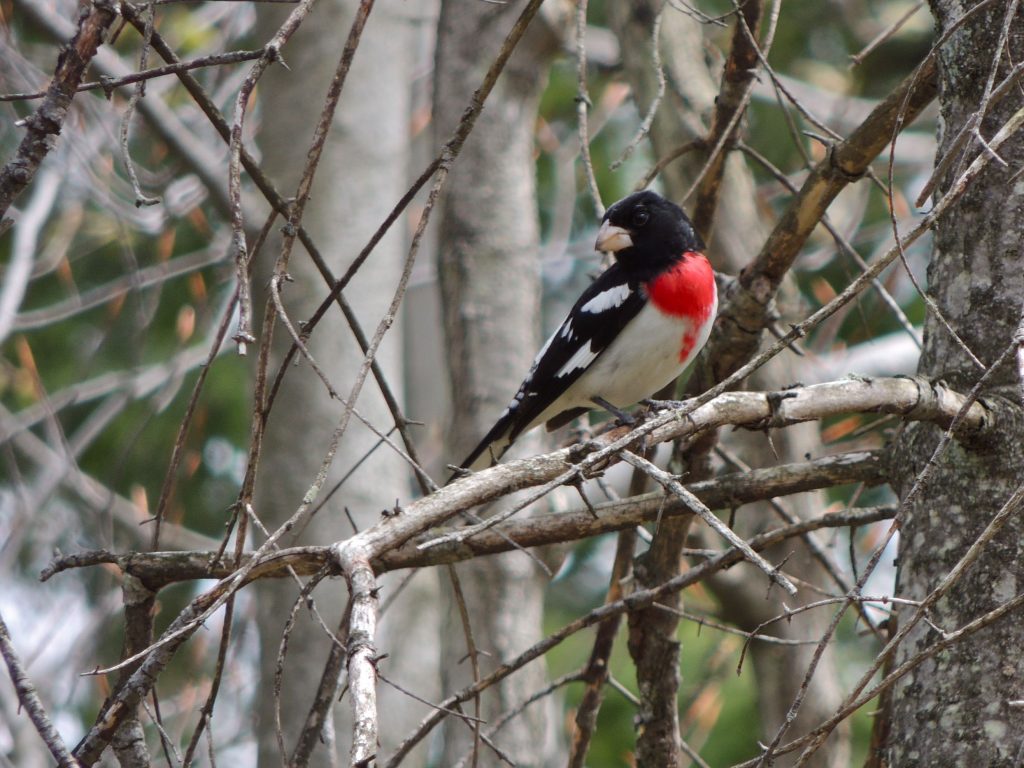July 19 2016. LaFarge Trail. Flamborough, ON. Summer birding can be slow going. Today as I walked another stretch of the same trail as two days ago, it almost seemed as though birds had all been vacuumed up, it was so quiet. My eventual turn-around point was an expansive marsh where I was happy to get a couple of glimpses (but just barely glimpses) of Virginia Rails and I thought they might end up as the highlights of my day. But as I sat hoping one of the rails would reappear, a Northern Waterthrush stalked me cautiously for a while. I wasted too much time fumbling with my crossed over binoculars and camera that the waterthrush was long gone by the time I had my camera primed for a lucky photo.
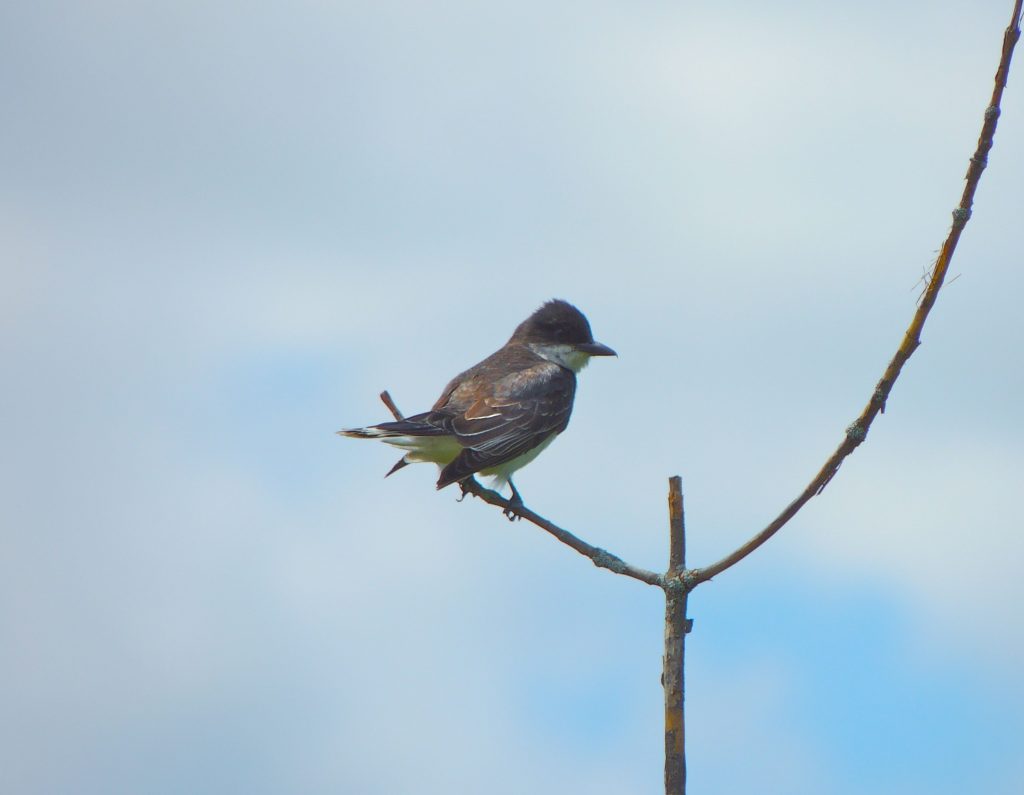
Much later I stepped off the trail for a while to follow the songs of Vesper Sparrows drifting from a dry, scrubby pasture. Sitting quietly in welcome shade, I watched a pair of Eastern Kingbirds flitting to and from a small tree in which I assumed they had a nest with hungry young. Vesper Sparrows patrolled all around me and I heard the soft clucks and coos of a Yellow-billed Cuckoo.
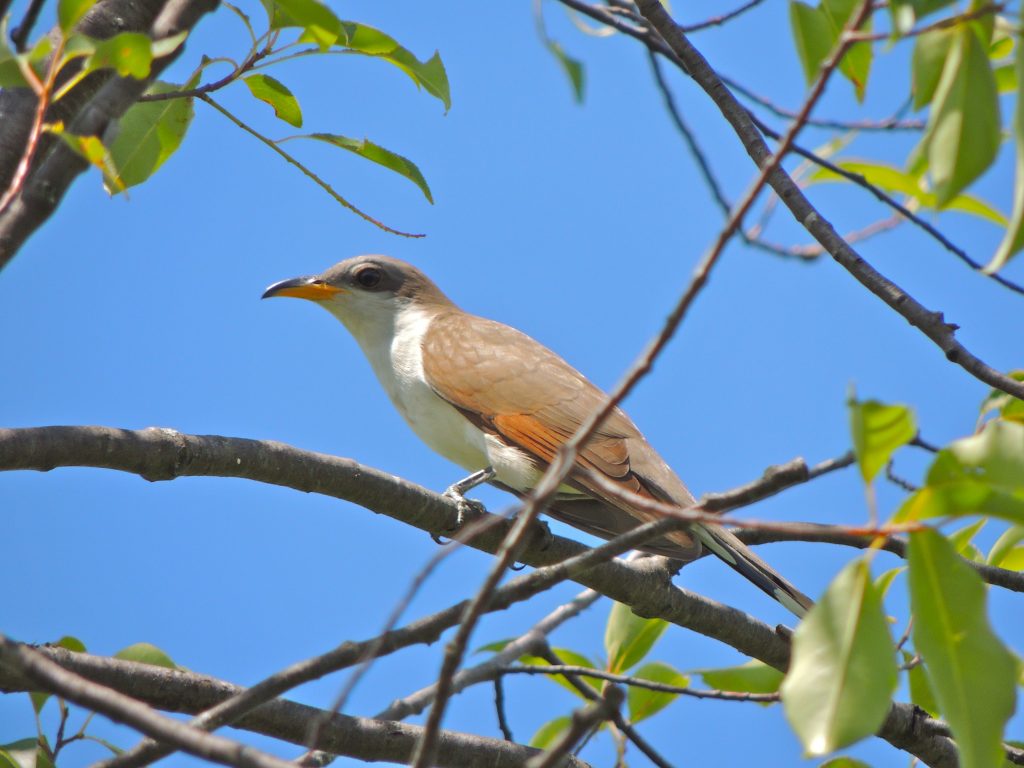
Both the Yellow-billed Cuckoo and its close relative the Black-billed Cuckoo, tend to be secretive, or at least stealthy, it’s easy to get confused distinguishing one species from the other, but whichever you find it’s always something of a triumph to see one. They prefer the canopies of forests so are a very special treat to watch at close quarters. Both cuckoo species are understated and tastefully dressed birds. A dash of chestnut in primaries and the yellow lower mandible set the Yellow-billed apart from its cousin.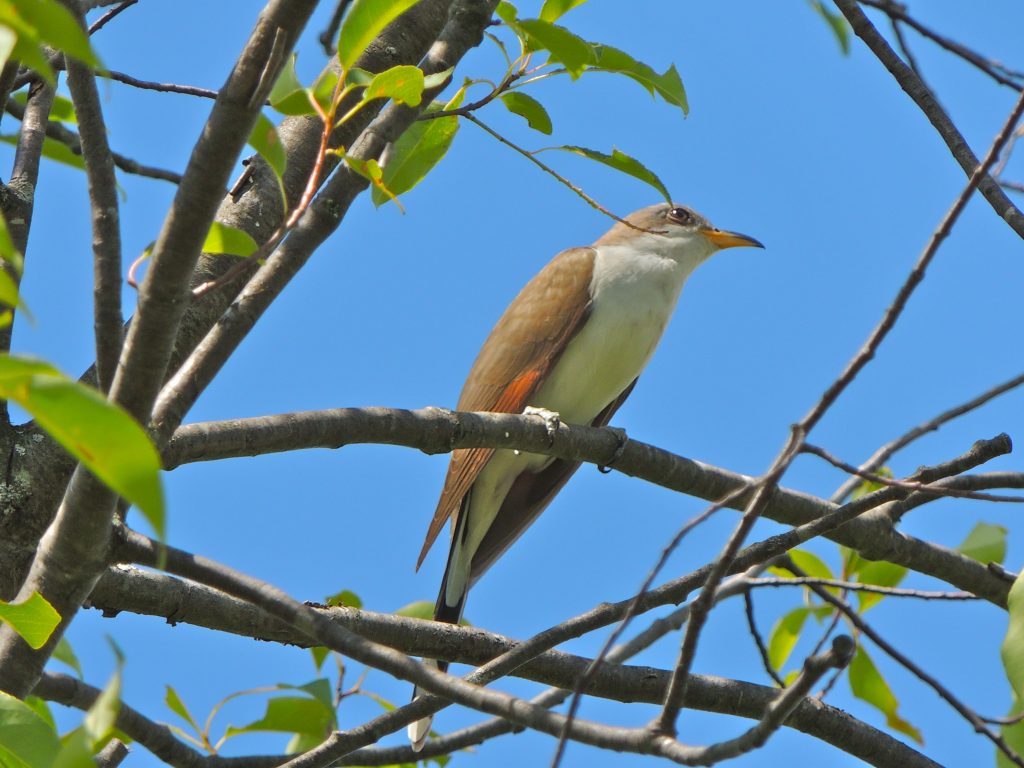
The approaching cuckoo seemed to regard me with both suspicion and interest, it came close a few times, clucked quietly to itself and stayed long enough for me to get a few nice shots. In all the time I enjoyed its company, the pair of Eastern Kingbirds watched from a distance, commenting softly to each other with a chatter sound like a marble rolling around an empty tin can, and Vesper Sparrows continued to sing intermittently. Summer birding is at its best when you fall into a quiet experience like this one.
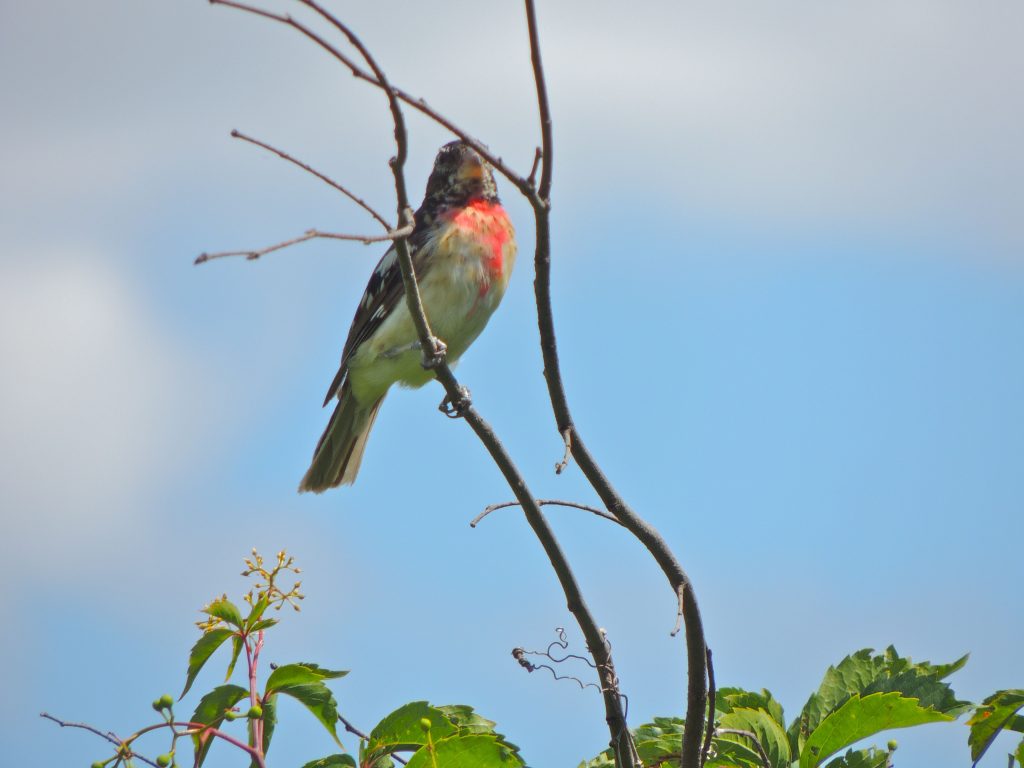
As I covered the last hundred meters of my walk, a male Rose-breasted Grosbeak emerged from a bordering thicket; always a notable bird. But this one was in the throes of molting out of its spring breeding plumage and taking on the drab browns and cream that are the dress-code of the females and young. I’ve include two photos: today’s bird (above) and another very splendid male photographed just two months ago. All that molting effort (it demands a lot of energy to grow a new suit of plumage) is invested into the bird’s two or three most important months.
